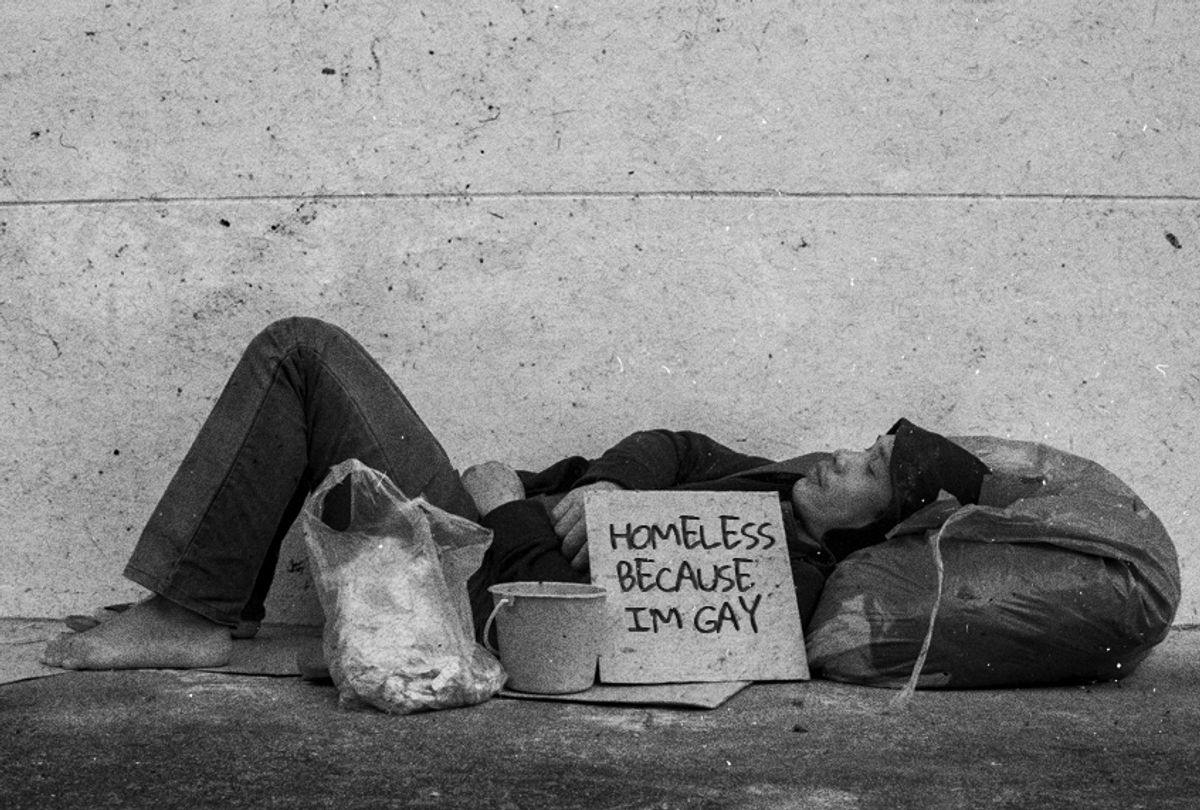Last summer I met Jude, who shared with me the harrowing story of how he had found himself homeless for the first time at 14 years old. Jude, who was assigned female at birth, came out to his father as a lesbian, was kicked out of his home and was on the streets, alone.
It didn’t end there. Months later, Jude then chose to be fully honest with his father about his identity and came out to him as transgender, quickly finding himself on the street again. Eventually, Jude ended up in an alternative high school in rural Washington State, where we met.
If you’re tempted to believe that Jude’s story is atypical, it’s not.
In an unprecedented nation-wide study, Chapin Hall at the University of Chicago found that close to 4.2 million young people experience some form of homelessness over the course of a year in the United States, whether it be sleeping outside, in a shelter or drifting between the homes of friends or family. To put that number in context, about 4.2 million people live in Los Angeles, the second largest city in the U.S.
The numbers are even more troubling for LGBTQ youth. Young people who identify as LGBTQ are more than twice as likely to experience homelessness as their straight or cisgender peers, and they make up between 20 and 40 percent of the homeless youth population — depending on the region — while representing only 7 percent of the youth population overall. Given that many young people are wary of disclosing their sexual orientation or gender identity, these likely are conservative estimates. These young people also report high levels of adversity, including sexual exploitation and discrimination, both within and outside of their families.
Chapin Hall’s study found that African-American youth who identified as LGBTQ had the highest rates of homelessness. Nearly a quarter of young black men ages 18-25 who identify as LGBTQ reported being homeless in the last year. LGBTQ youth who identified as multiracial had similarly high instances of homelessness.
These numbers show the punishing effects that homophobia, transphobia and racism have on our young people. And while the numbers may be bleak, they give us a starting point for implementing solutions. We should focus first on the most vulnerable.
So where do we start?
The most important thing we can do is talk to LGBTQ young people who have experienced homelessness and ask for their input about what works. These young people are the experts — they don’t just understand the systems that need to be fixed, they’ve lived them. In my home community of Seattle, when we asked young people what they needed, they told us they want more diverse housing options. There is no one-size-fits-all solution. Jude, for example, was in a Host Homes program, which matches young people with caring adults who house them while they work on longer-term goals like education and employment. Others may need help with rental subsidies while they get back on their feet.
In the Chapin Hall study, young people repeatedly pointed to how important it was for providers to recognize their identities, which often sit at the intersection of race, sexual orientation and gender. They said they often weighed decisions about whether to seek help from an agency against the risks of staying on the street, with that agency’s track record of LGBTQ acceptance playing a key role. One young person in the study said that he wished people were more accepting not only of LGBTQ people, but also of people who are struggling with trauma and substance abuse. Across the board, young people expressed wanting services that affirmed their identities and their agency.
But it’s not enough to respond when a young person becomes homeless — we need to prevent LGBTQ young people from becoming homeless in the first place. The study points to opportunities to support families long before conflict escalates to the point where a young person is on the streets. Another opportunity for prevention noted in the study is in schools, which are well-suited to identify the early warning signs of homelessness and connect students with housing, family support and other services. Education is also a key preventative for future homelessness.
And that brings me back to Jude — I need to finish sharing his story.
Jude has the resilience that I see in so many young people I’ve talked to who have experienced homelessness and adversity. He graduated from high school last summer and started college at the University of Alaska in the fall.
We owe it to our young people to improve our response systems and supports, to prevent what Jude endured from happening again to other youth. I believe we can end LGBTQ youth homelessness — in fact we can end youth homelessness altogether — and it starts with adults affirming young people’s identities and letting them show us the way.

Shares